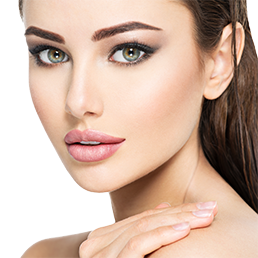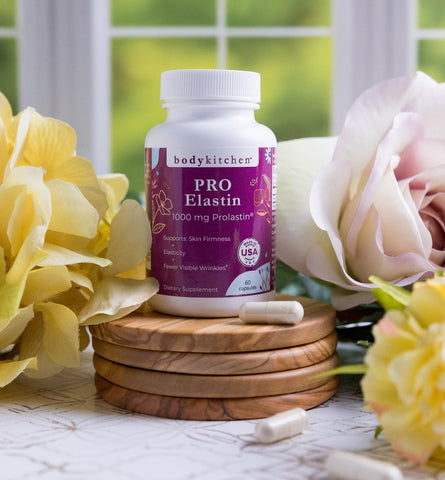Summer Sun Safety: Facts and Myths You Must Know to Save Your Skin
Summer is feeling hot, hot, hot and getting hotter. Every decade since record-keeping of our planet’s climate began in the 1880s, the surface temperature of the Earth has steadily increased by about 0.11°F, tripling to 0.36°F since the early 1980s.
In some parts of the world, the summer of 2023 was the hottest in 2,000 years!
No matter where you stand on the climate crisis, the numbers don’t lie and experts worry that the sustained upward trend may spell trouble for skin health.
The undisputable fact is, the number of skin cancer rates have skyrocketed as a result of rising temps. Between 2009-2019, the risk of developing skin cancer shot up by over 40%, and over the last three decades, the percentage of people who develop melanoma – the most dangerous type of skin cancer – more than doubled.*
According to Worldwide Cancer Research, an organization that funds pioneering research, just one sunburn every two years can triple your risk of melanoma.*
You may think you know how to stay sun safe, but there are a lot of myths out there that could be putting you in harm’s way. So let’s increase your sun-care IQ by debunking the top myths.
Sun Myths Debunked
Myth #1: A suntan is not damaging to skin.
The quest for a golden glow is not without risk if you’re getting an assist from the sun. That’s because unprotected skin can start to burn in a matter of minutes depending on the sun’s intensity, geography and your natural pigment.
Skin reacts to UV rays, especially UVB which comprises only 5% of UV light but carries more energy than UVA, by producing melanin. Excessive exposure to UV light can cause DNA mutations and damage.* So, while you may think you look healthier, the cumulative effects of a sun-kissed glow can actually compromise your health and accelerate skin aging.
Myth #2: Skin has to be exposed to the sun to absorb vitamin D.
Unprotected skin absorbs the UV light needed to synthesize vitamin D in 5-30 minutes, varying by seasonality and geography,.* During warm weather months, you can get what you need in just minutes.
To raise your levels of vitamin D naturally, aim for the ‘Goldilocks zone’ between too much and not enough by limiting unprotected sun exposure to early mornings before 10 am and after 4 pm during summer. Fat cells store vitamin D for months, so your bones, brain and immune system will have the reserves needed to maintain healthy function even if you have to skip a day.
Myth #3: Windows protect skin from the sun.
Windows sneakily expose you to more sun than you may think. When you are driving or sitting on the sunny side of a window, your skin absorbs UVA light. Glass blocks most UVB rays, but more than 50% of UVA rays penetrate and can reach your skin. While you’re not likely to get a sunburn from this filtered light, it’s enough to increase your risk of sun damage – also called photoaging.
To help guard against future wrinkles, sagging and discoloration, don’t skip applying broad spectrum sunscreen to your face, neck, chest, arms and hands, which take the brunt of the rays. Keep a pair of sunglasses in your car to not only protect your eyes, but the delicate skin surrounding them that’s prone to forming fine lines and wrinkles.
Soak Up Summer, Safely
Enjoying that summertime vibe does not mean skipping out on sunshine. You can have skin-friendly fun without increasing your risk of accelerated skin aging or catastrophic sun damage.
- Create a barrier – Whether through protective clothing, a wide brim hat, shade or a beach umbrella, the best way to avoid direct exposure to the sun is by having at least one safety barrier.
- Apply and reapply sunscreen – Use sunscreen with a minimum sun protection factor (SPF) of 30 that protects against both UVA and UVB rays. Apply generously and frequently, especially after swimming and sweating.
- Limit time in the sun – You may be tempted to keep the party going, but consider whether the present and future effects on your skin, and the potential risks, are worth it. Play it safe and give your skin a shady time out.
What to Do If You Have a Sunburn
If you find yourself with lobster-red skin after prolonged sun exposure, soothe the burning sensation with a cool compress, or take a cool bath, to decrease excess blood flow to the irritated area.
Applying an aloe vera-based moisturizer helps to keep skin cool and hydrated on the surface. Your body promotes healing by drawing fluids from within to skin’s surface, so drink plenty of non-caffeinated, non-alcoholic liquids to hydrate from within.
If the sunburn is uncomfortable or painful, take an NSAID (non-steroidal anti-inflammatory drug), such as ibuprofen, to help reduce inflammation.
But, as health experts would agree, the best treatment for your skin – now and in the future – is to avoid overexposure and sunburns altogether.














